18 SaaS Marketing Metrics & KPIs You Must Track in 2024

Co-Founder & CTO
SaaS marketing metrics are a marketer’s compass, telling marketing teams whether their campaign is resonating with customers or whether the leads they’re bringing in, are valuable to the sales organization.
Marketing metrics and KPIs enable teams to make data-backed decisions that help fill the pipeline, nurture potential customers, and ultimately, drive revenue. However, the danger with these B2B SaaS marketing metrics is that there are hundreds you could track. You could spend hours diving into the data on a single campaign not to mention your website or lead funnel.
While it’s important to be intimately familiar with your company’s marketing KPIs, you don’t want to fall into the bottomless metric pit. Instead, you need to know what metrics will help you decide if you need to redirect marketing dollars or spend more resources on lead creation.
In this article, we’ll dive into the marketing metrics for SaaS you should be tracking. While each company has its own set of key KPIs, this will help you narrow down the metrics and determine where you should be dedicating your attention.
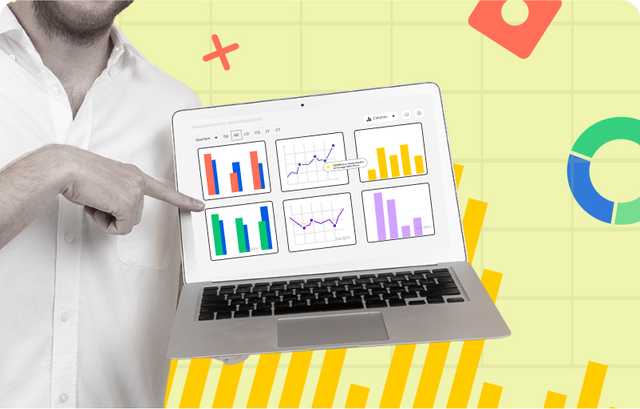
Understanding SaaS Marketing Metrics and KPIs
We often use marketing metrics and KPIs interchangeably, but there’s an important distinction between the two.
SaaS marketing metrics are raw data points you track. They’re the individual ingredients within a recipe versus the final dish. Consider data points like number of leads or number of MQLs—these are metrics.
SaaS marketing KPIs, on the other hand, are measurable goals that you or your company creates based on your metrics. Let’s say last quarter the team brought in 200 MQLs. Your goal for this quarter is to increase that number by 15%. Your KPI is to reach 230 MQLs.
Tracking metrics and setting specific and clear KPIs gives departments clear marching orders each quarter and helps B2B SaaS companies make data-driven decisions that lead to growth.
Key SaaS Marketing Metrics to Track
To help you effectively track your marketing program, we rounded up this list of top SaaS metrics that marketers should be keeping tabs on. Every B2B SaaS company is different, but these will be a great jumping-off point to help you evaluate your current program, dig into the details, and see where improvements can be made.
Lead Generation Overview
On the list of SaaS metrics you should track is lead generation. Lead generation helps you understand which tactics work to generate high-quality leads and where you should dedicate more time and resources. Here are a few lead-related metrics you should keep an eye on.
- Leads Created: The number of leads created within a specific time period.
- Leads Qualified: The number of leads that have been qualified by marketing, indicating a level of engagement that makes them more likely to become a customer.
- Leads Accepted: The number of leads that have been assessed and accepted by both the marketing and sales teams.
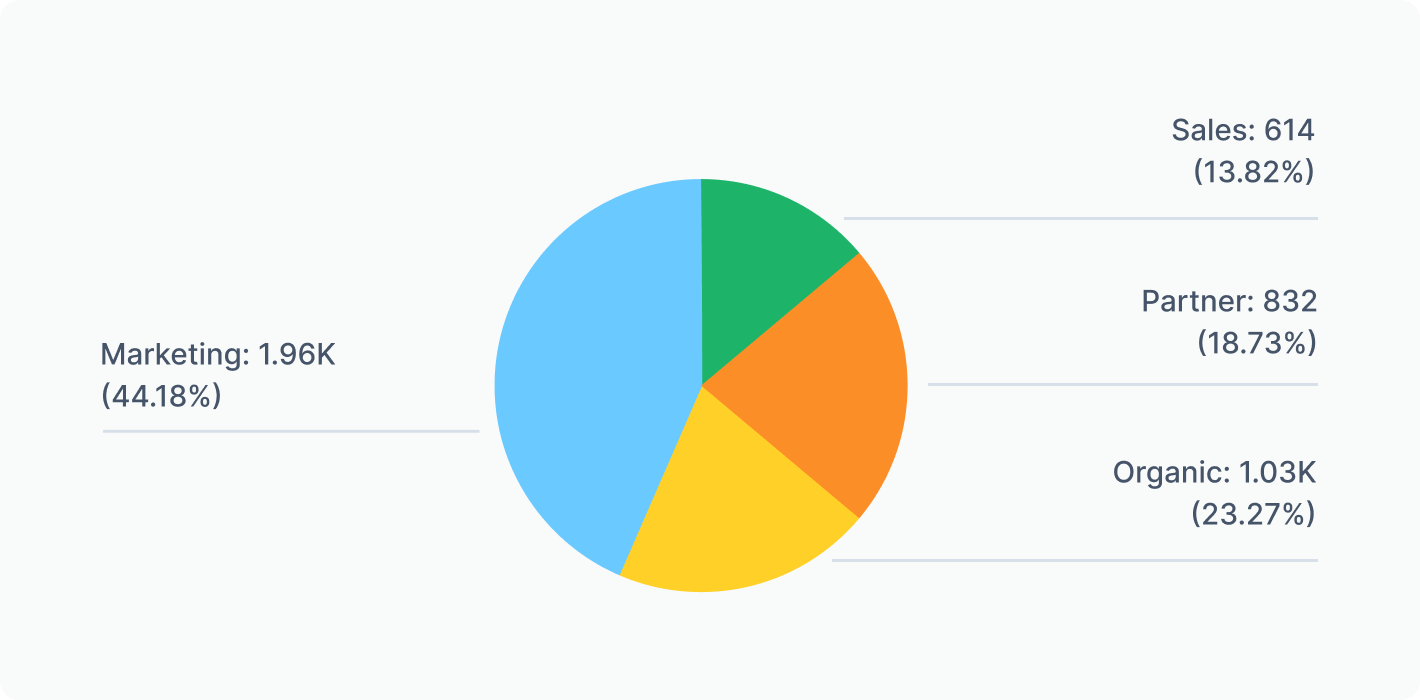
Lead Conversion by Stage
Measuring lead conversion by stage helps you understand the quality of the leads you’re bringing in. By knowing the conversion rates of each stage, the marketing team can better measure how many leads need to be created in order to make it through each stage of the funnel and eventually convert into an opportunity.
- Lead-to-MQL Conversion Rate: The percentage of new leads that convert into MQLs within a specific time period.
- Lead-to-Opportunity Conversion Rate: The percentage of new leads that converted into sales opportunities within a specific time period.
- Lead-to-SAL Conversion Rate: The percentage of leads that transition into Sales-Accepted-Leads (SALs).
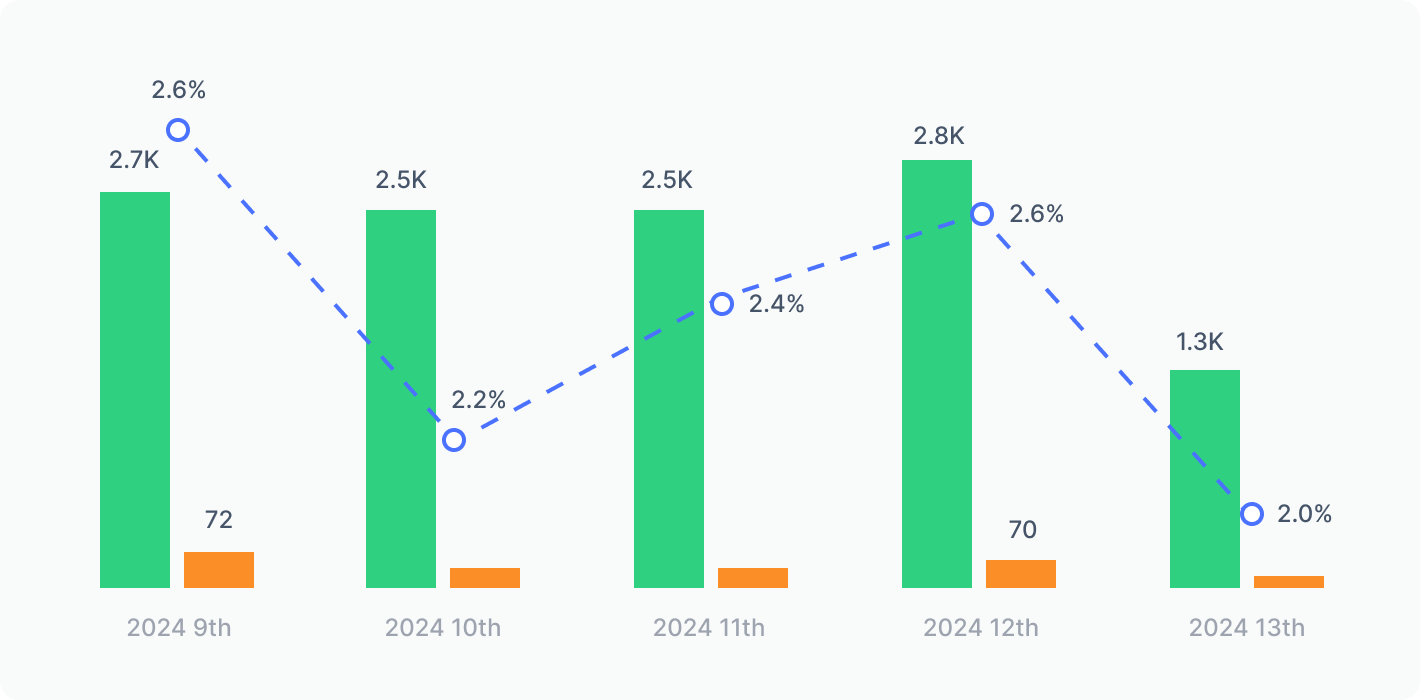
MQL Conversion
Marketing Qualified Leads (MQLs) are the bridge between marketing and sales teams. These metrics shed light on the quality of the leads coming in through the marketing funnel. If, for example, the MQL-to-Opportunity conversion rate is too low, this tells marketers that the leads coming through the funnel are low quality and the lead requirements to pass to the next stage need to be adjusted.
- Leads Qualified: The number of leads that have been qualified by the marketing team.
- MQL-to-Opportunity Conversion Rate: The percentage of MQLs that are converted into new sales opportunities.
- Average MQL-to-Opportunity Duration: The average number of days it takes for leads to become MQLs within a specific time frame.
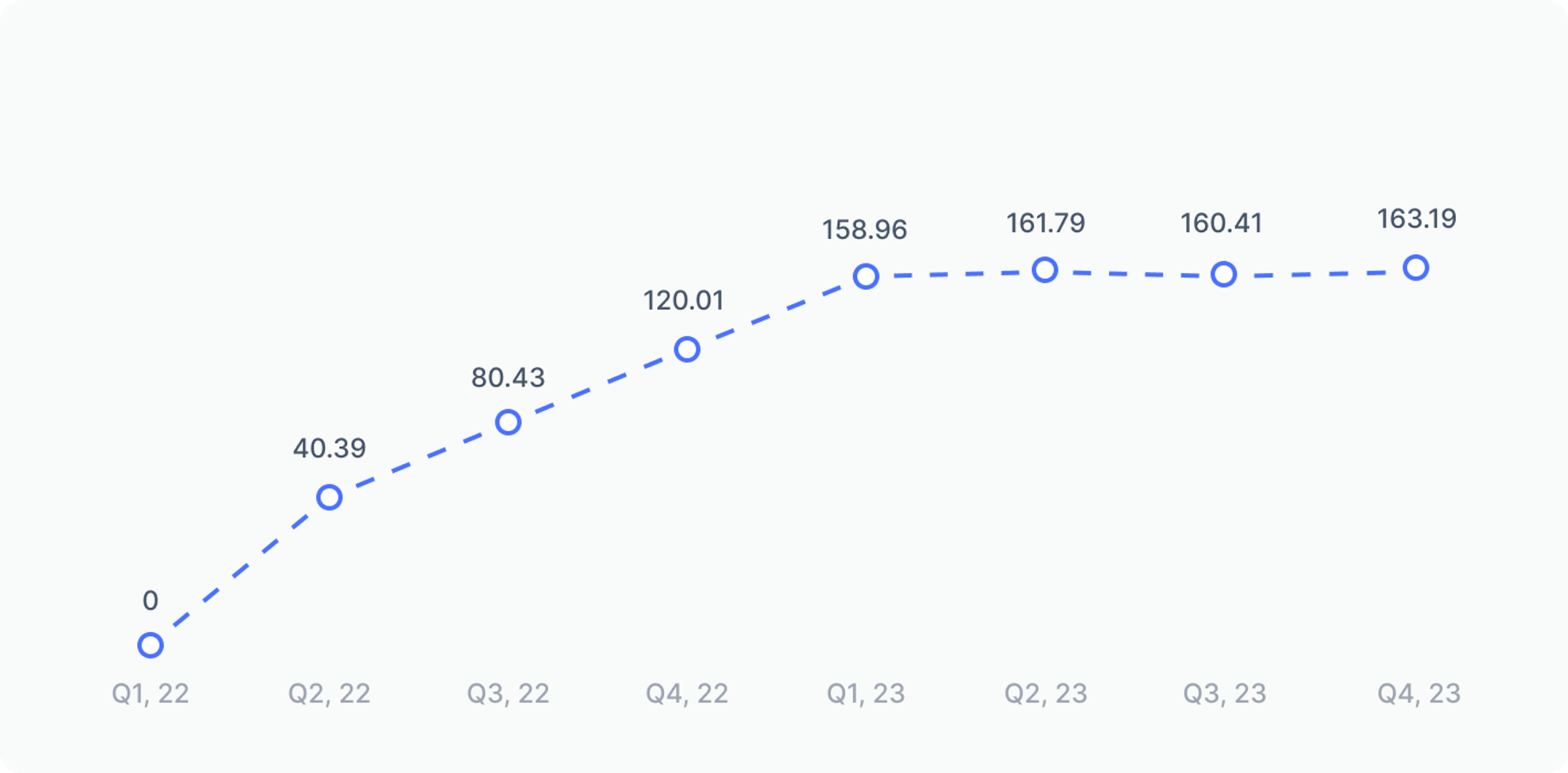
Website Acquisition
Your website is one of your strongest tools for conversion. It can help increase awareness for your offerings, educate new visitors, and convert visitors into customers. While there are many more website metrics to track, here are a few website acquisition metrics you should be keeping your eye on.
- Website Visitors: The total number of website visitors during a specific period.
- Website User Acquisition: The number of first-time visitors to the website.
- Website Visitor Conversion Rate: The percentage of website visitors that converted.
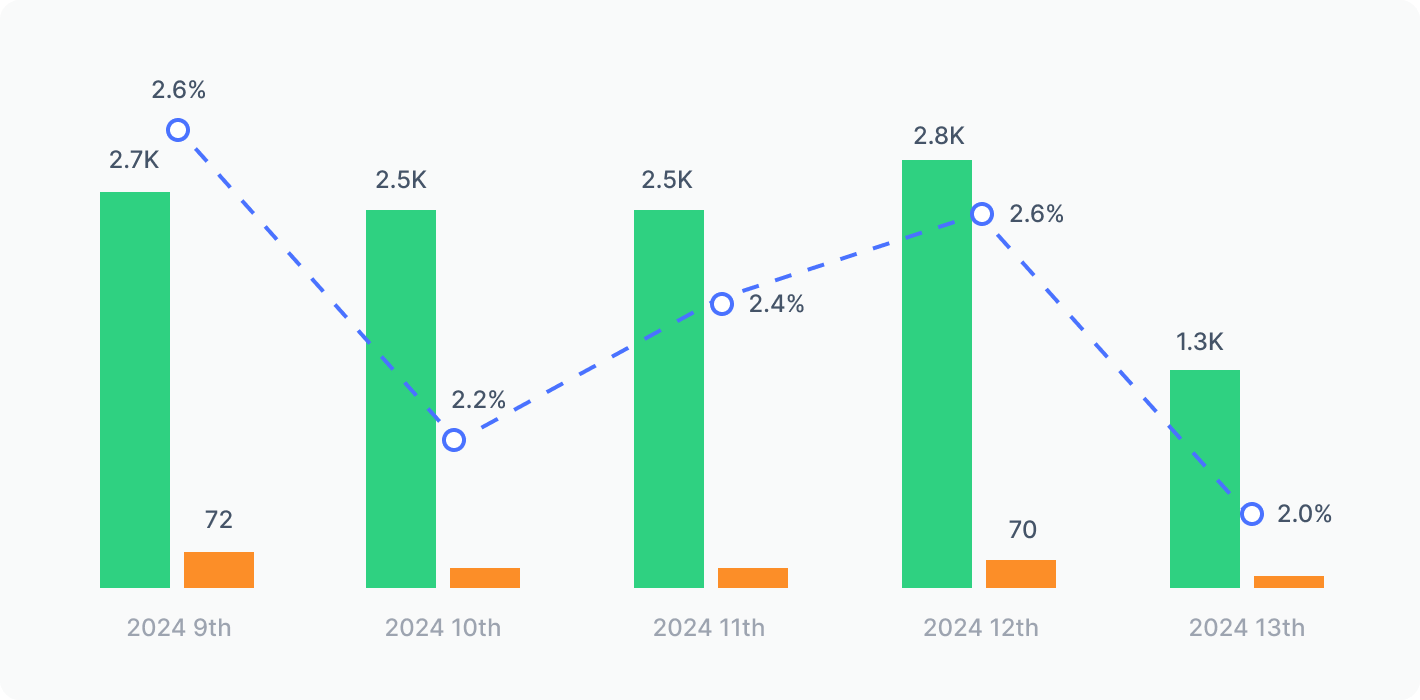
Campaign Performance
Understanding campaign performance and what ultimately influences revenue is vital for determining what campaigns are effective. Using this information, you can make adjustments to the channels you deploy and the types of campaigns you leverage.
- Campaign Lead Sourced: The number of leads sourced by campaigns within a specific time period.
- Campaign MQL Conversion Rate: The percentage of MQLs influenced by campaigns that converted into opportunities.
- Campaign Lead Conversion Rate: The percentage of leads sourced by a specific campaign that converts into an opportunity.
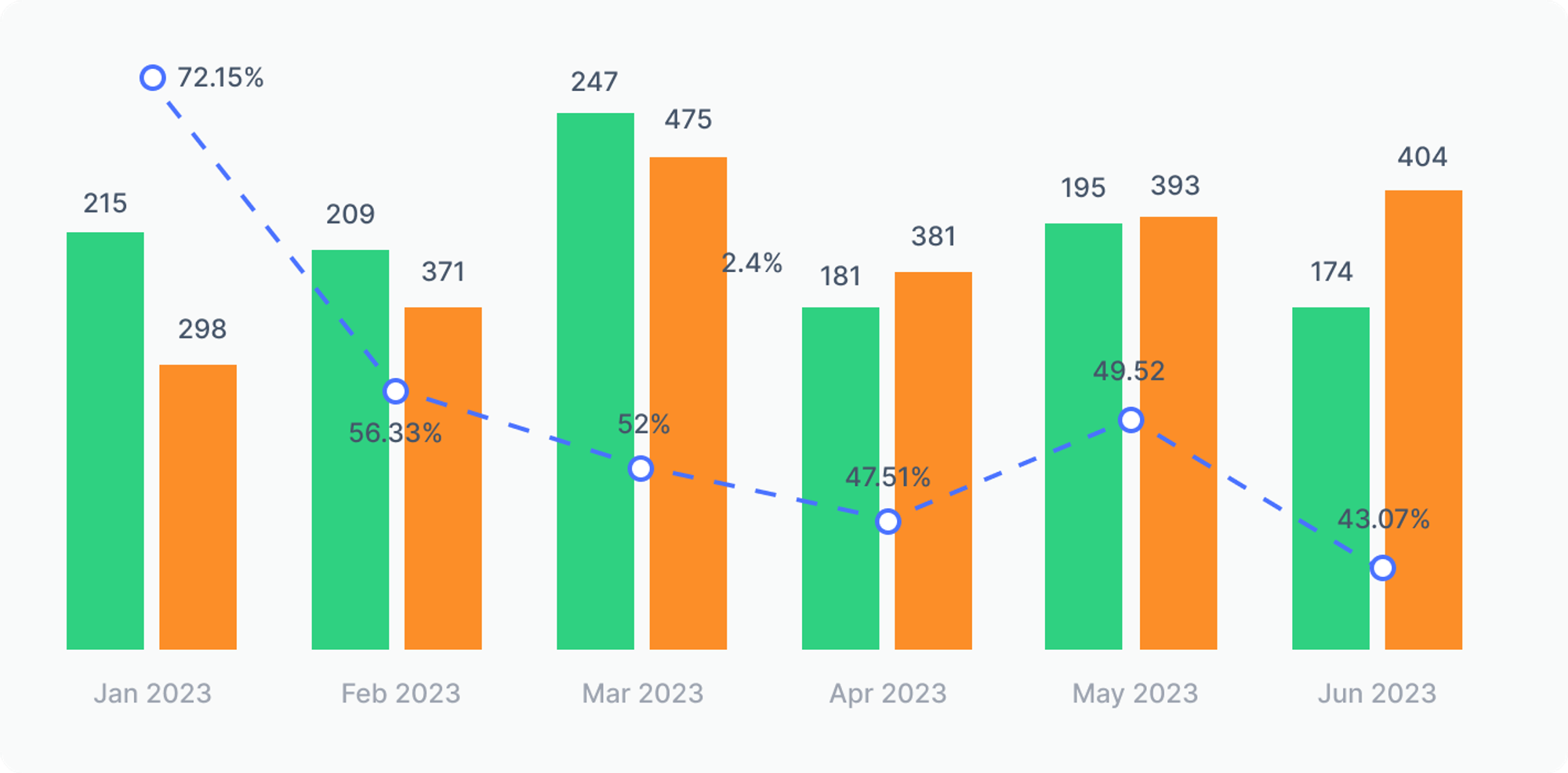
Campaign Cost
Ultimately, you need to understand not only how many leads and the quality of leads, but also if those leads are worth the cost of the campaign. If you’re spending thousands of dollars on a campaign that results in just a few leads, you’re likely not getting your money’s worth. Diving into campaign cost and customer acquisition cost will help you determine the true value of your marketing efforts.
- Campaign Cost per MQL: The average cost of a single lead that has qualified as a marketing lead.
- Campaign Cost per Lead: The cost to generate a single lead through a campaign. This is calculated by dividing the total campaign cost by the number of leads produced.
- Average Campaign Cost: The average cost of campaigns during a specific period of time.
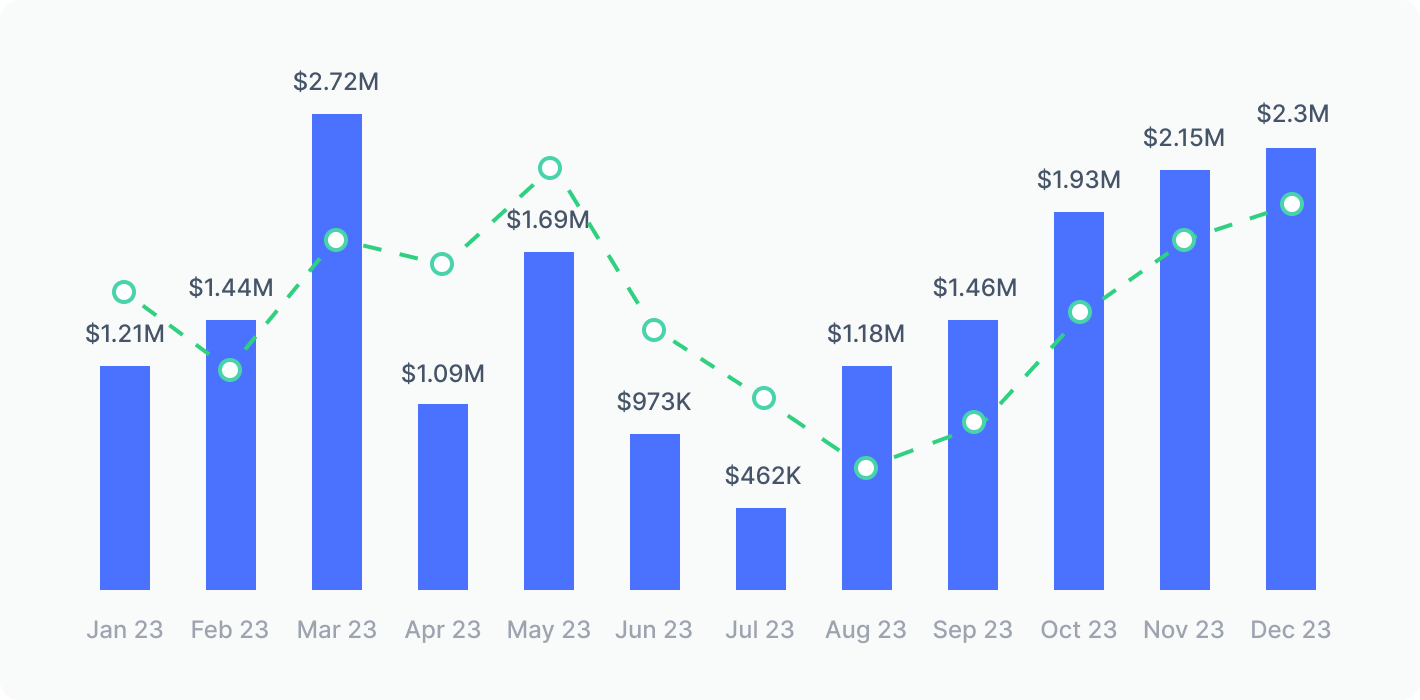
Advanced KPIs for SaaS Marketing
The metrics above are all building blocks to help you create KPIs that push your team and company forward. Here are a few advanced KPIs you could build out using your marketing data and that of the sales and customer success teams.
Customer Acquisition Cost (CAC) by Marketing Channel: Work with your sales team to calculate customer acquisition cost. This involves tallying up all of your marketing and sales expenses within a given period and dividing that by the number of new customers you acquired within that time frame. From there, marketing teams can dive into the CAC by marketing channel or by campaign to better understand what is effectively converting high-value customers.
Customer Lifetime Value: To calculate customer lifetime value, you’ll need some broader data sets such as average revenue per user (ARPU) and average customer lifespan. Marketers can dig into customer lifetime value by acquisition channel to see what channels are bringing in customers with long-term value.
Time to First Value (TTFV): This SaaS KPI measures the time it takes for a new customer to provide a specific amount of value after signing up. This helps marketers understand where there are slowdowns in the onboarding process so it can be streamlined for faster customer success.
Lead Scoring Effectiveness: One method that marketers use to move leads from stage to stage is to assign scores to leads based on their engagement and resemblance to the ideal customer profile. A low conversion rate for high-scoring leads is a good indicator that the model needs to be adjusted.
Best Tools for Tracking SaaS Marketing Analytics
When it comes to calculating these B2B SaaS metrics, there are a number of tools you can use to help you.
Website Analytics: To track traffic and website visitors, Google Analytics is the industry standard for website analysis. You can measure visits, sources, and conversion rates.
Marketing Automation Platforms: Tools like HubSpot and Marketo Engage allow you to manage marketing campaigns, track lead generation, and analyze the nurture of leads.
Customer Relationship Management Systems (CRMs): These platforms, like Salesforce or Zoho CRM, are your one-stop shop for all of your customer information. You can access metrics like customer interactions and churn rates within these systems.
Revenue Analytics Platform: Revenue analytics platforms, such as Sightfull, integrate with platforms like Google Analytics, Marketo, and Salesforce to offer a comprehensive view of your marketing program. With more data at your disposal, it’s easier to develop the right KPIs for your business and ensure you’re reaching them.
Data Analysis Simplified

Real-Life Marketing Metric Examples
Sometimes metrics can feel like a jumble of numbers—they don’t have true value until you put meaning behind them. To show you how valuable the metrics can be and how you can use them to your advantage, here are a couple of real-life examples of companies that used marketing metrics to achieve astounding results.
Zoom in on Lead Generation
Zoom, the video conferencing company, wanted to drive user adoption. Zoom offered a freemium model with limited options (such as meetings limited to 40 minutes), which is perfect for trying out its conferencing solutions. By tracking free trial signups and analyzing user behavior, Zoom optimized the onboarding process and implemented email sequences that nudged free users toward a paid subscription.
These lead generation tactics powered Zoom’s freemium model and the platform took off!
Dropbox Tracks Customer Acquisition Cost
Cloud storage company, Dropbox, wanted to scale their user base. By tracking referral signups and customer acquisition cost through referrals, Dropbox saw it was much more cost-effective to acquire customers through referrals compared to other campaigns. Dropbox developed a robust referral program that offers tiered rewards and incentives for existing users.
By focusing on the referral program, Dropbox saw 3900% growth in 15 months! Focusing on referrals allowed Dropbox to acquire customers at a much lower customer acquisition cost, significantly increasing their user base and revenue.
The Future of SaaS Marketing Metrics
When we look to the future of SaaS marketing metrics in 2025 and beyond, we see companies going deeper into their data and using cutting-edge technologies to do so.
AI-powered technology is making it easier for companies to analyze metrics and predict customer behavior. This will enable marketing teams to better target the right customers and understand what levers are working to gain leads that turn into opportunities. It will also help marketers access insights more quickly to make data-driven decisions in real-time.
For example, Sightfull recently released an AI assistant designed to help you with any of your data questions. Wondering why there’s a spike in website users? Ask Sightfull AI! Want to know how your latest campaign is performing? Ask Sightfull AI for a summary.
AI solutions will help marketers become more familiar with the data at their disposal, helping them access insights that they previously had to work with their data analytics team to receive.
Take charge of your company's growth today!

Start Measuring Your SaaS Marketing Metrics
While these are all important metrics for SaaS companies, this list is not the end all be all, it will give you the direction you need to start monitoring your KPIs and making data-informed decisions. Use your company’s KPIs for guidance to help you hone in even further on the metrics that matter most to your team. These KPIs will help you keep your eye on the big picture rather than getting lost in the weeds.
And, when in doubt, leverage Sightfull to help you track and reach your KPIs. Sightfull offers out-of-the-box templates with predefined metrics. Designed for B2B SaaS KPIs and for business users, Sightfull is easy to use and can provide insights within minutes. Ready to get started? Fill out the form below to talk to an expert.
Schedule a demo now!!
Track metrics for your success!
Get a Clear View of New Lead Generation
Identify top lead sources, segments, and regions. Monitor changes in lead qualification and acceptance over time, track lead stages, and analyze overall trends in new lead generation.